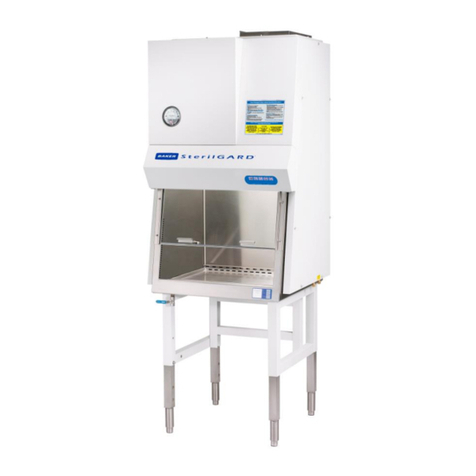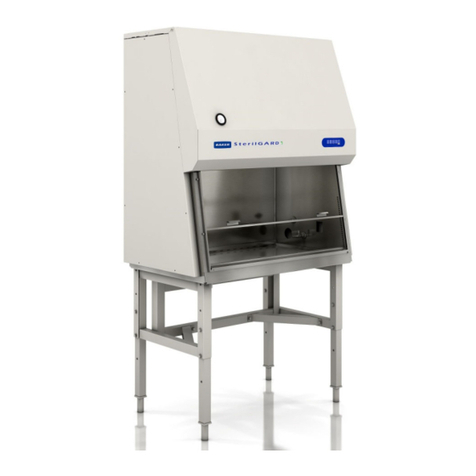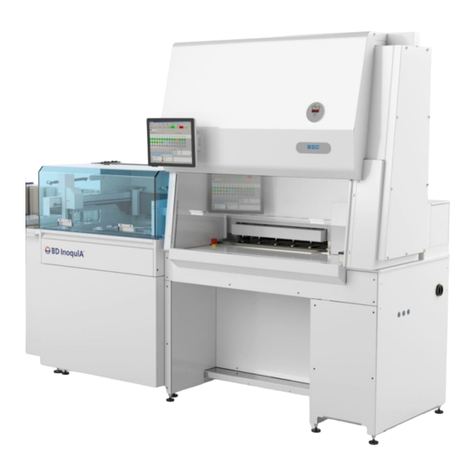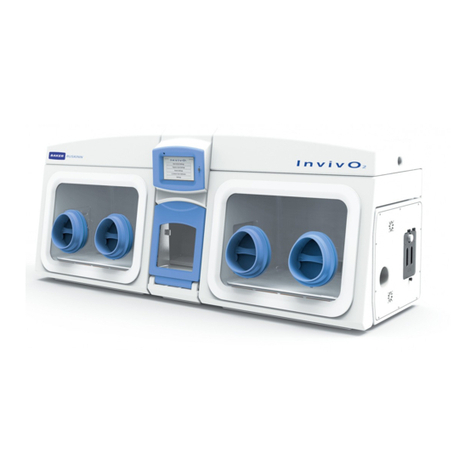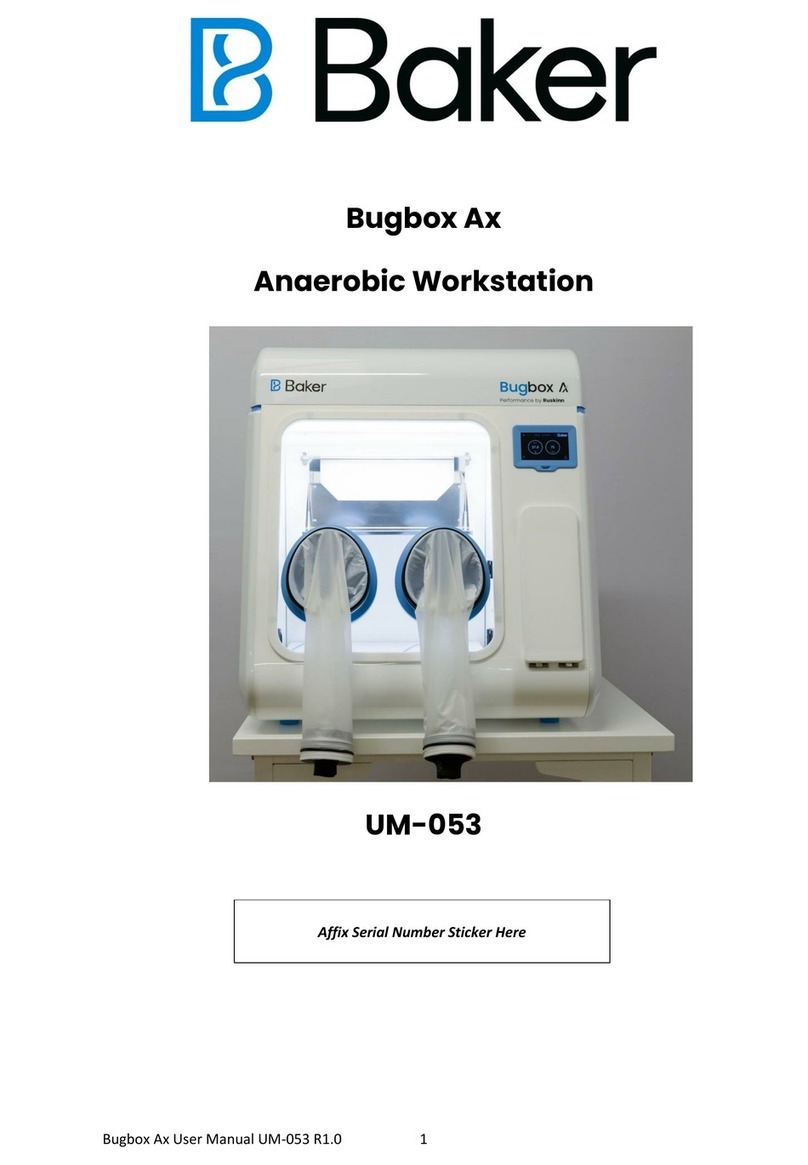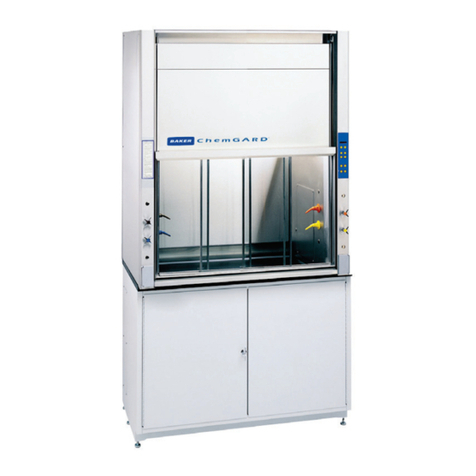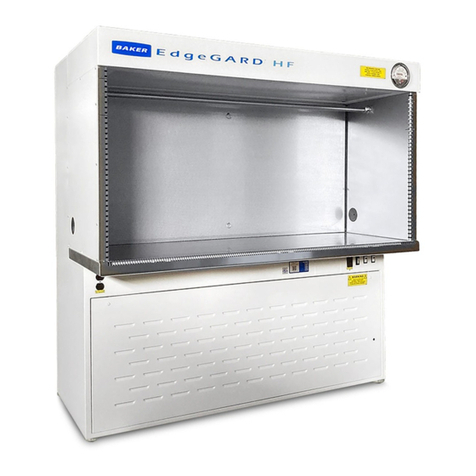
P. O. Drawer E / 161 Gatehouse Road / Sanford, Maine 04073 / USA
800-992-2537 / 207-324-8773 / Fax: 207-324-3869 / bakerco@bakerco.com / bakerco.com
TABLE OF CONTENTS
I - FUNCTION AND DESCRIPTION OF THE CHEMOSHIELD
.....................................................................1
CHEMOSHIELD AIRFLOW AND BASE FEATURES .......................................................................................................1
Fig. 1: Airflow Inside Cabinet..............................................................................................................................1
CABINET PRESSURE AREAS ........................................................................................................................................2
ACCESS TO THE WORK CHAMBER ..............................................................................................................................2
DESIGN DETAILS.........................................................................................................................................................2
Performance assurance.........................................................................................................................................2
Building exhaust requirement................................................................................................................................3
Chamber walls and tunnel construction................................................................................................................3
All-metal plenums..................................................................................................................................................3
Stainless steel work surfaces..................................................................................................................................3
Cabinet exterior panels..........................................................................................................................................3
Tested HEPA filters ...............................................................................................................................................3
Viewscreens...........................................................................................................................................................3
Work chamber and pass-through lighting.............................................................................................................3
Chamber base pan construction and clean ability ................................................................................................3
Cabinet air balance adjustments...........................................................................................................................3
Easy filter access ...................................................................................................................................................4
Telescoping stand..................................................................................................................................................4
Mechanical interlock between pass-through door & inter-chamber door ............................................................4
Pressure monitoring of chambers..........................................................................................................................4
Airflow monitor – AFM .........................................................................................................................................4
Auxiliary switch (Optional) ...................................................................................................................................4
Electrical duplex....................................................................................................................................................5
Lift system (Optional) ............................................................................................................................................5
SPECIFICATIONS FOR CHEMOSHIELD®-MODEL CS500............................................................................................5
Weight....................................................................................................................................................................5
Electrical Specifications........................................................................................................................................5
Environmental Conditions.....................................................................................................................................6
Symbols and Terminology .....................................................................................................................................6
II - PREPARING THE CHEMOSHIELD® FOR USE.............................................................................................7
CHECKING THE CABINET UPON ARRIVAL...................................................................................................................7
THE USES OF A CHEMOSHIELD®CABINET................................................................................................................7
LOCATION WITHIN THE LABORATORY........................................................................................................................7
INSTALLING THE CABINET ..........................................................................................................................................7
FINAL CONNECTIONS AND TESTS................................................................................................................................8
III - PROPER CABINET USE...................................................................................................................................9
OPERATOR CONTROLS................................................................................................................................................9
START-UP PROCEDURE ...............................................................................................................................................9
LOADING MATERIALS AND EQUIPMENT....................................................................................................................10
RECOMMENDED WORK TECHNIQUES .......................................................................................................................10
UNLOADING AND WIPE DOWN ..................................................................................................................................10
REACTING TO SPILLS ................................................................................................................................................10
DECONTAMINATION..................................................................................................................................................10
CLEANING AND DISINFECTING STAINLESS STEEL......................................................................................................11
Simple Cleaning...................................................................................................................................................11
Disinfection..........................................................................................................................................................11
351D700 Rev H iii

